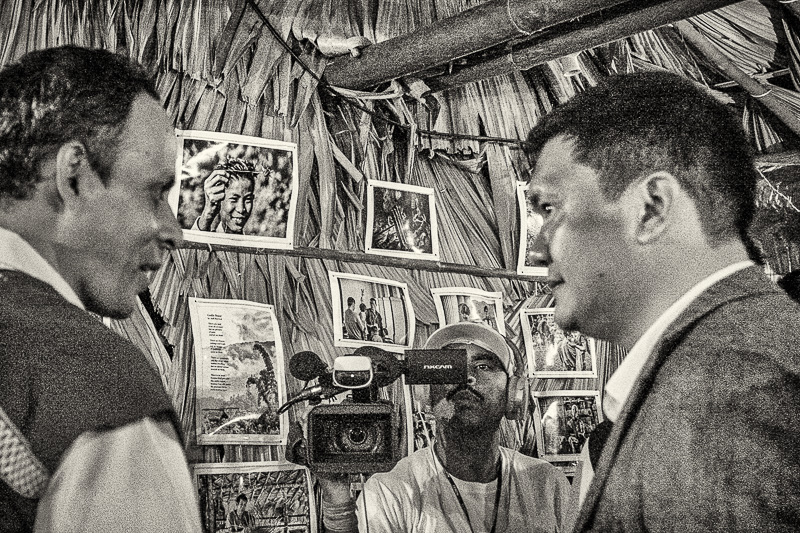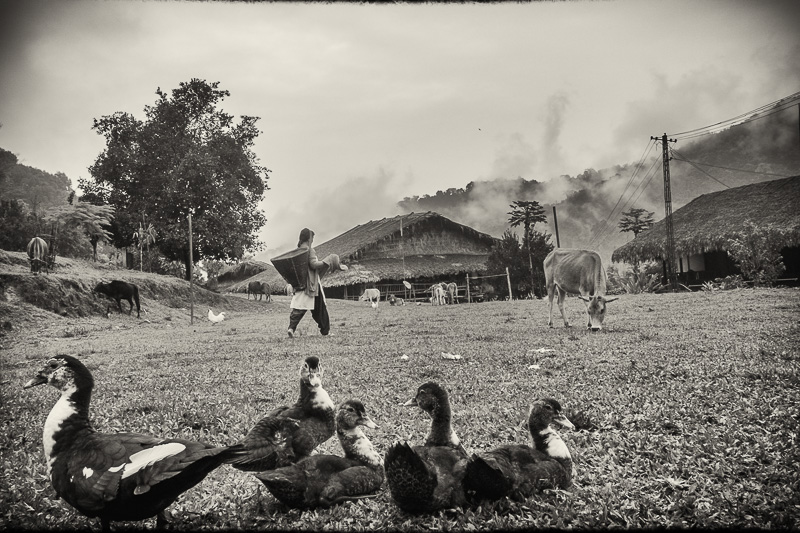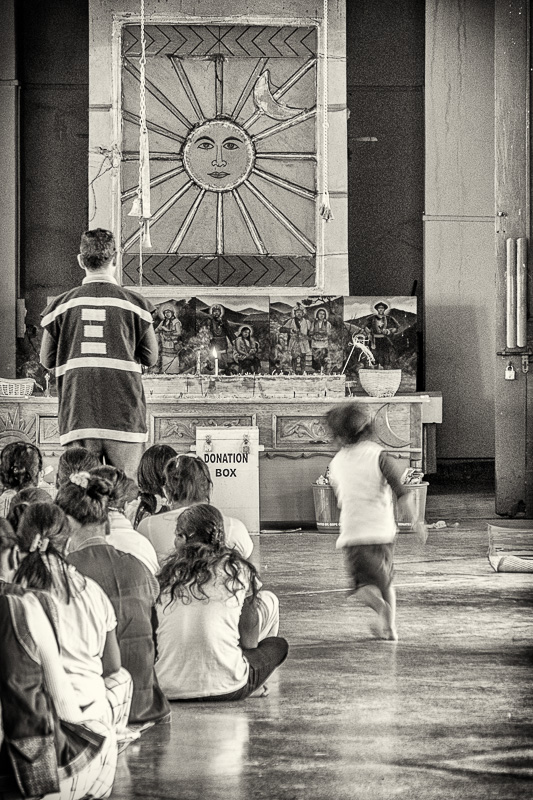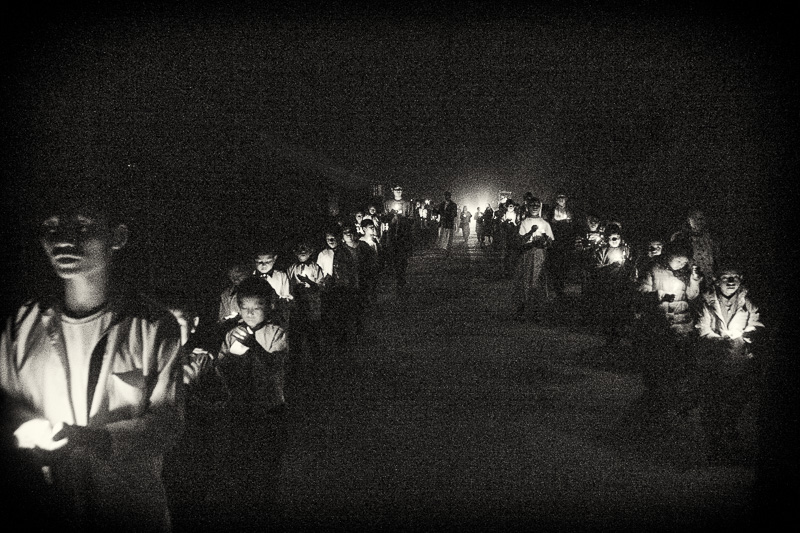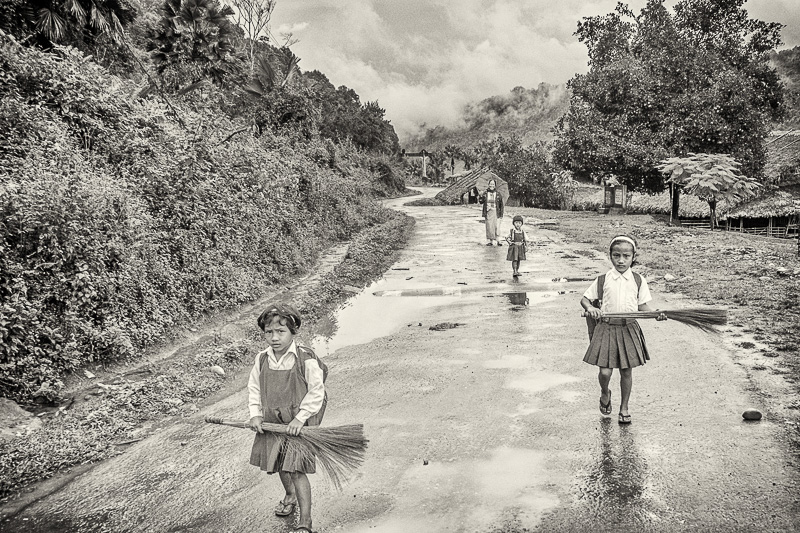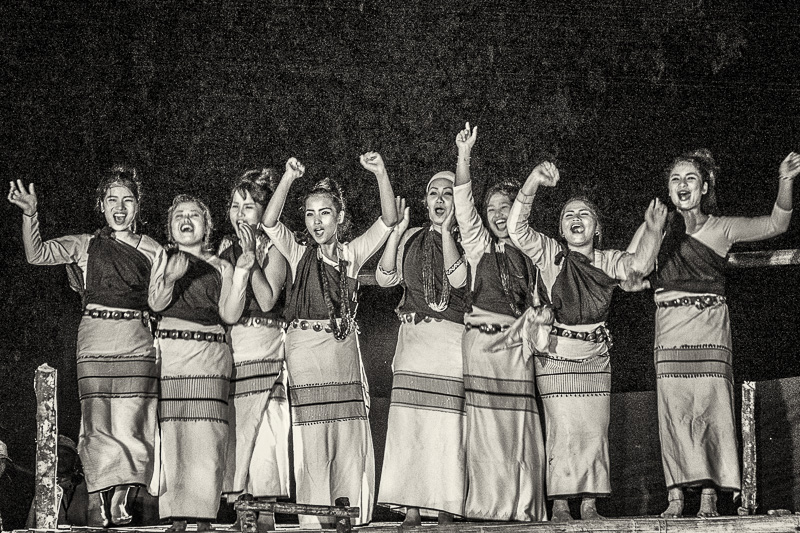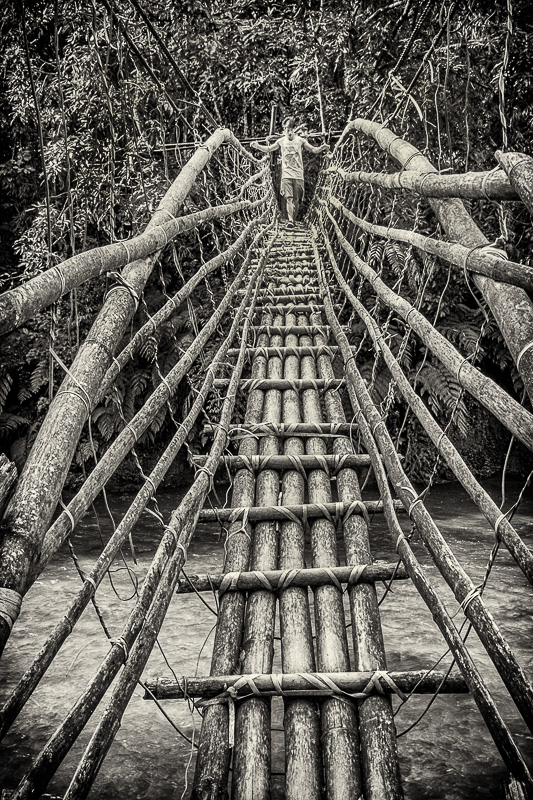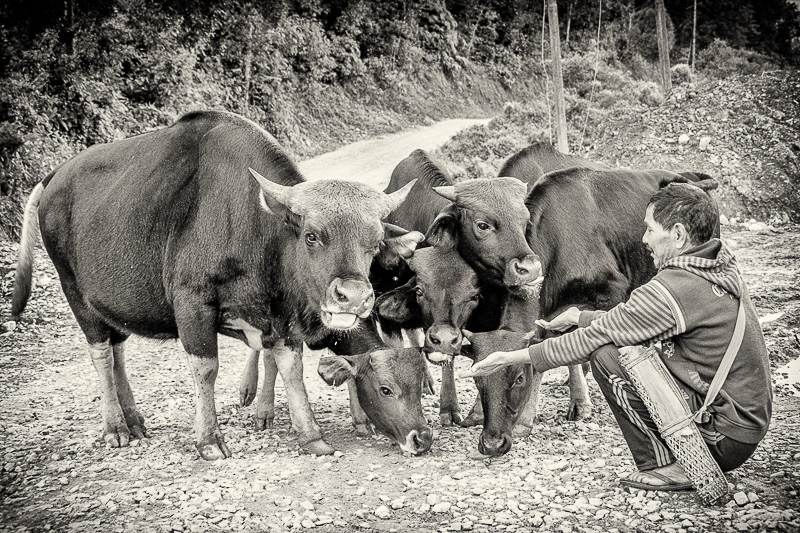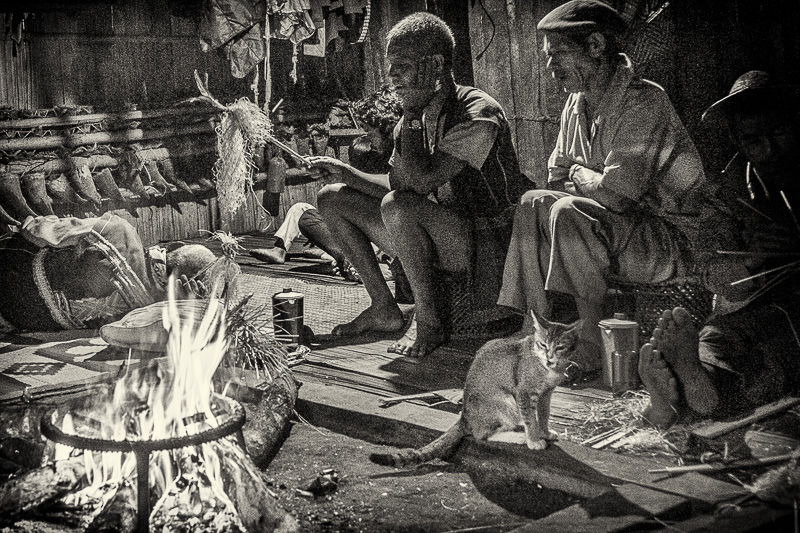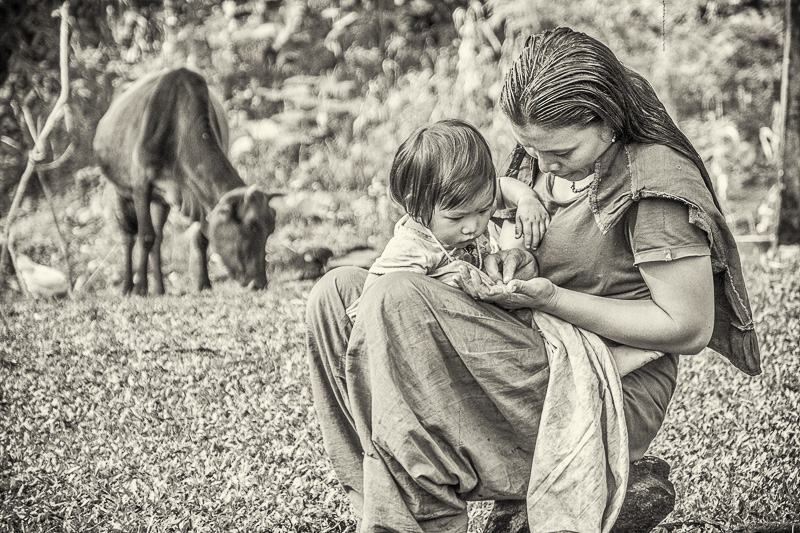
Galos is one of the 26 major tribes of Arunachal Pradesh. Like other tribes of Arunachal Pradesh, they have fascinating mythical stories about how they came into being. When I was invited as a poet in residence at Basar, it was to write poems for a month, but I was so captivated by their ways that I picked up a camera also. The result was this photography exhibition at the Confluence, which was held at the end of the residency. I named the exhibition “Godly Basar”, based on a poem that I wrote while I was there. The exhibition was inaugurated by the Chief Minister of Arunachal Pradesh, Shri Pema Khandu. In living with Galos, the first thing that one gets stuck with is their hospitality. Not only do they know how to have fun, but also how to put their guests at ease. Their houses are equipped with a kitchen cum fireplace cum sitting area, where everyone sits together in evenings and enjoys long sessions of food, poka (a home-brewed mild alcoholic drink from fermented rice), gossip, jokes, songs, and such. One of the articles that I wrote about the residency is here: https://arunachaltimes.in/index.php/2017/10/26/artist-residency-at-basar/
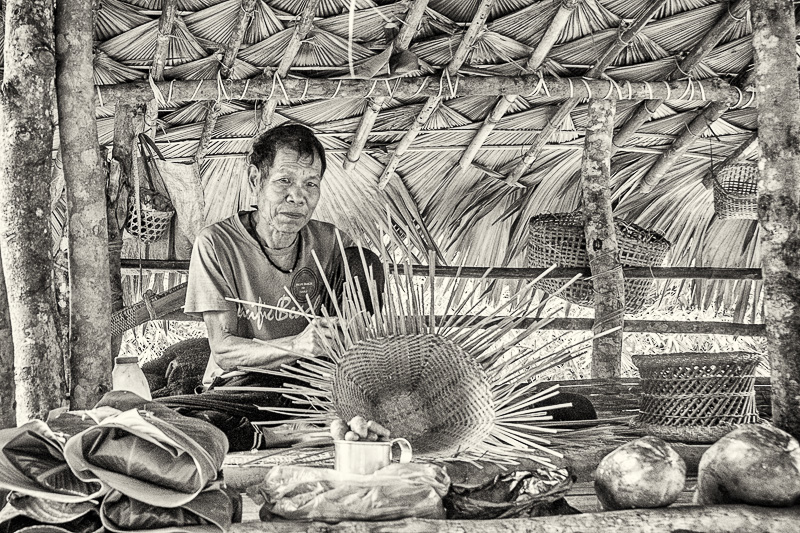
There are too many things to write about their culture, but one of the fascinating things is their names. The second syllable of the father’s name becomes the first syllable of the child’s name. e.g. if a person is name Nyochi, his child may be named Chiram, Chido or Chika. And Chika’s child may be named Kakir or Kanyi, and so on. In this way, every Galo can trace their origin all the way back to Tani (or Abo Tani), known as the father of the human race. The other thing that immediately draws attention is their connection to nature. Whether it is food or their dwellings, everything is rooted in their surroundings. Their food is based on
whatever grows around them, and their houses and buildings are all made of bamboo and other plant residues. They are so protective of nature, that they have voluntarily banned fishing by netting in all their rivers—catch them using traditional methods and only as much as you need. No unnecessary exploitation of any natural resources. The world outside has so much to learn from Galos and their ways of life, but the juggernaut of development is slowly making advances into their areas also. How long will the Galos be able to preserve their culture and Identify intact is a big question. Their leaders and organisations are trying, and I sincerely hope that they succeed.
